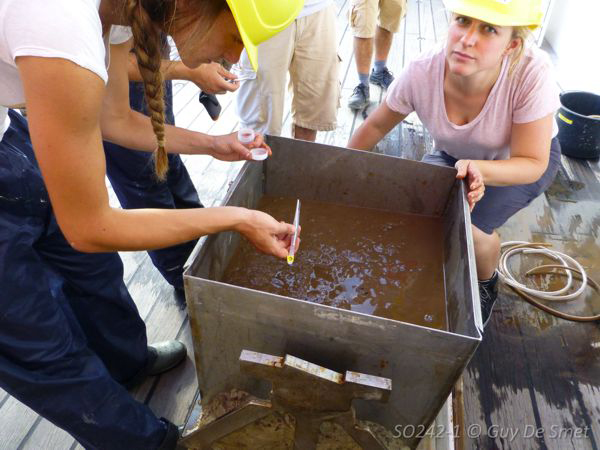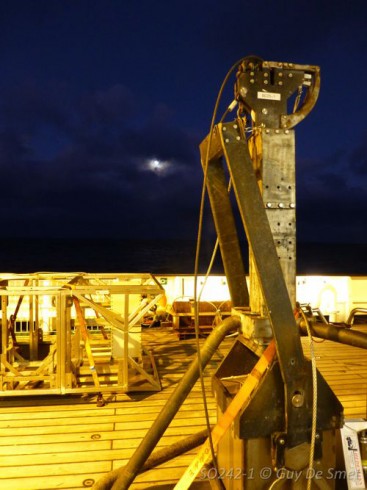By Dr. Clara Rodrigues and Dr. Patricia Esquete Garrote, Universidade de Aveiro, Portugal
The Box-corer is one of the stars of this DISCOL revisited cruise. This stainless steel sampling box has been used since the 1980s to determine the fauna composition at the abyssal floor. The surface area of the box is a quarter of a square meter and the penetration depth of 0.5 metres can be controlled to prevent over-penetration in softer sediments. This box has been designed for a minimum of disturbance of the sediment surface by bow wave effects which is important for quantitative investigations of the macrofauna.
All starts nearly 4 hours before having the sampling on board. The equipment must be prepared and when it’s time to deploy, the box-corer dives in the water and slowly (maximum speed is 1 metre per second) goes down to collect the sediment and then returns full of sediment and animals.
Upon recovery the sample box is removed and the processing of the sample starts; the first step is to remove the water, then photograph the surface area and only after that we can collect the sediment. When nodules are present we also need to see if there is epifauna associated (e.g. Hydrozoa, Scyphozoa, etc.) and nodules are removed and gently washed. Then we start collecting sediment from different layers. This part can be tricky when the sediment is fluffy and with a high content of water (like in our samples). Just like the layers of a birthday cake would come with different flavors, the sediment changes in color and chemical composition as we go deeper. How would this affect the fauna living within the sediment? When the sampling is complete it is time to sieve the sediment using a column sieve of 500 and 300 µm and then preserve the sieve residues in 96 per cent ethanol. When everything is done we still have to throw away the rest of the mud and clean the box-corer and the deck for the next sampling.
Samples will be sorted at home and will be used for ecologic, taxonomic, morphologic and genetic studies. Our main goal is to describe the macrofaunal assemblages present in the DISCOL area and compare our results with the results obtained in previous studies carried out between 1989 and 1997.

